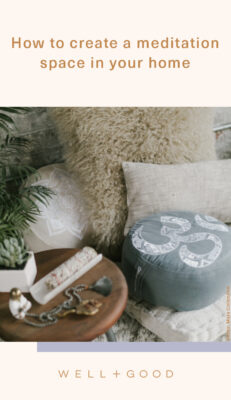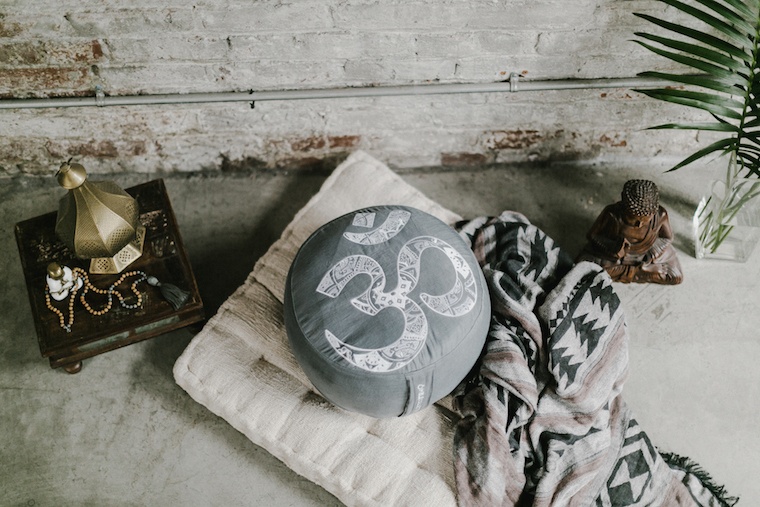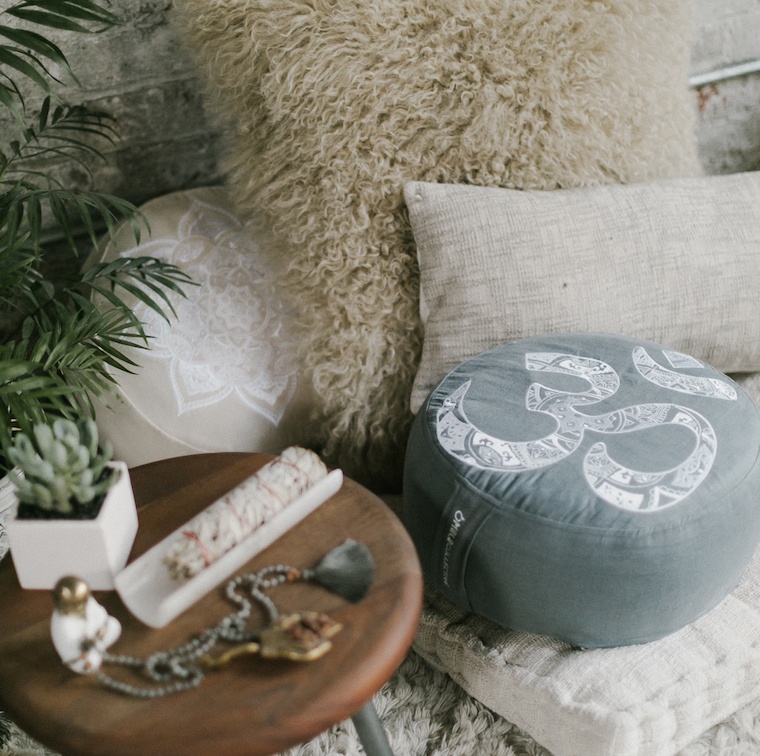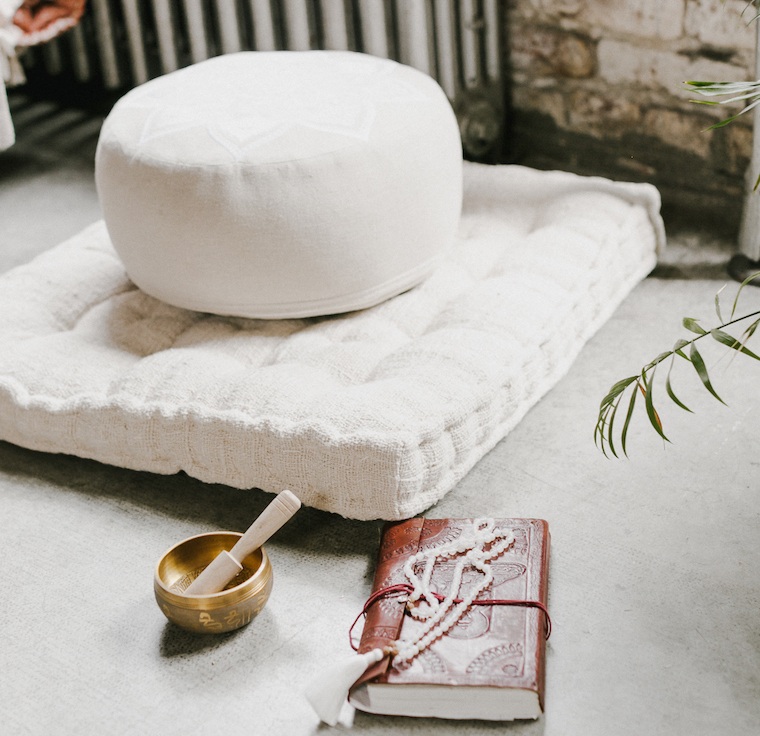3 Tips for Creating a Meditation Space in Your Home That You Will Actually Use
Similar to how cute activewear can inspire you to work out more, having an inviting meditation space can lead to more time spent meditating. Your home is already a sanctuary from the stressors of everyday life, but the little nook or corner you devote to quietly reflecting inwardly should radiate extra peaceful vibes.
It's something Mala Collective founder Ashley Wray thinks a lot about. She discovered the benefits of using malas as a meditation tool while on a life-changing trip to Bali and made it her mission to share them with others. The stones and gemstones used in her healing bead jewelry are chosen carefully, for their meaning as much as their beauty, and are meant to enhance your meditation practice and help you focus. (Even the most seasoned meditators' minds can drift off to explore what they want for dinner or everything left on their to-do list.) Just this month, Mala Collective launched a home collection consisting of meditation cushions, candles, and other accessories also meant to help ground your practice.
Here, Wray shares three of her best tips for creating a meditation space that's equal parts dreamy and peaceful. Whether you want to devote a full room to your practice or just a small corner, her insight is meant to help turn meditation from a lofty goal into a daily practice.


1. Keep the cushion in plain sight
If you want to make meditation a regular habit, one of Wray's best tips is keeping your cushion front and center in either your bedroom or living room as a visual cue."We all know the saying ‘out of sight out of mind,’" she says. "Having a visual inspiration to practice meditation is a powerful reminder."
"Having a visual inspiration to practice meditation is a powerful reminder."
Wray offers up some other helpful tips when picking out a meditation cushion: "If you do yoga a lot and have more open hips, a lower cushion might [feel better] to you. But if your hips are a bit tighter or if you like sitting higher up with more support, then a more elevated or firmer cushion would be best."
If your ankles tend to fall asleep during meditation, Wray suggests placing them on another cushion or blanket.

2. Keep the color scheme peaceful
Since meditation isn't exactly a time when you want to feel jittery or restless, Wray suggests incorporating peaceful colors into the space. When picking out throw blankets and wall hangings, think about what feels soothing to you. "Once you start associating your meditation space with calm and joy you will be more likely to sit in practice," she says.

{{post.sponsorText}}
That doesn't mean you have to eschew patterns altogether—especially if you like them—but it may mean choosing soften color palettes over bold and busy prints.

3. Add tools to enhance your practice
Besides a meditation cushion, Wray says there are other tools you can incorporate into your meditation space to make it magical (or at the very least, feel less like a chore). One of her faves is obviously mala beads. Repeating your manta as you touch each bead—or simply just breathing in and out as you do so—is a helpful way to bring focus to a restless mind, something every meditator can relate to.
"You can also use crystals, sage, or a singing bowl to clear the energy or space, as well as candles and a journal to write down what you reflect on," Wray says. If you have a word or mantra you live by, you can also bring in art and imagery to reflect it, such as a framed quote about gratitude.
"Remember, this is a personal experience and is meant to inspire you to connect with yourself," Wray says. "Have fun with it!"
If you're looking for help guiding your practice, check out these apps. Plus, find the best meditation style for your personality.
Loading More Posts...